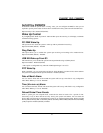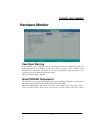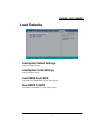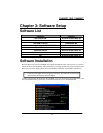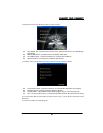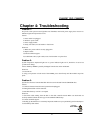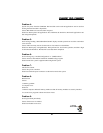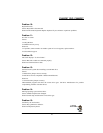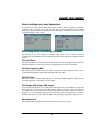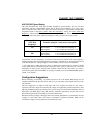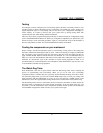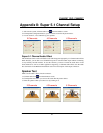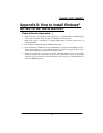
PX865PE7 PRO/ PX865PE7
44
Appendix I: Over Clocking
thorough
nderstanding of all of the variables, procedures, and the potential risks associated with overclocking.
t control of all of the possible variables that exist (i.e. memory, AGP card, user
ing apparatus etc), we cannot assume responsibility from damage to any
s of your system due to overclocking.
clocking?
the processing speed of certain components of your system above and
at those components were rated for. With this mainboard, depending on the model, you
SB (Front Side Bus) frequency
quency
ency
ency
late your new frequencies.
e calculated using individual formulas.
mulas have a single “CPU Host Frequency” in common. For each of the items above there
plied to the “CPU Host Frequency” to determine the final
ulas.
CPU Clock Ratio
t Frequency * FSB multiplier
CI frequency = CPU Host Frequency / PCI divisor
= CPU Host Frequency / SRC divisor
is simply understanding the formulas above and going into
atio”, “CPU Clock Ratio” and “CPU Host
ultiplier for Intel based mainboards will always be fixed at 4. The AGP, PCI and
e all determined by the BIOS setting AGP/ PCI/ SRC Speed Setting.
Important
Before you attempt to overclock your system, we strongly recommend that you obtain a
u
Because we canno
configurations, cool
component
What is over
Overclocking is accelerating
beyond wh
may be able to overclock some or all of the following:
CPU Speed
F
DDR (Memory) fre
AGP (Accelerated Graphics Port) frequ
PCI (Peripheral Connect Interface) frequency
SRC (Serial Reference Clock) frequ
How to calcu
With this mainboard, the frequencies mentioned above ar
These for
is also a multiplier or a divisor that is ap
frequency for each component as shown in the following form
= CPU Host Frequency * CPU Speed
FSB frequency = CPU Hos
DDR frequency = CPU Host Frequency * DDR:CPU Ratio
AGP frequency = CPU Host Frequency / AGP divisor
P
SRC frequency
Configuring your system for overclocking
the BIOS Setup Utility and changing “DDR:CPU R
Frequency”.
Note that the FSB m
SRC frequencies ar



